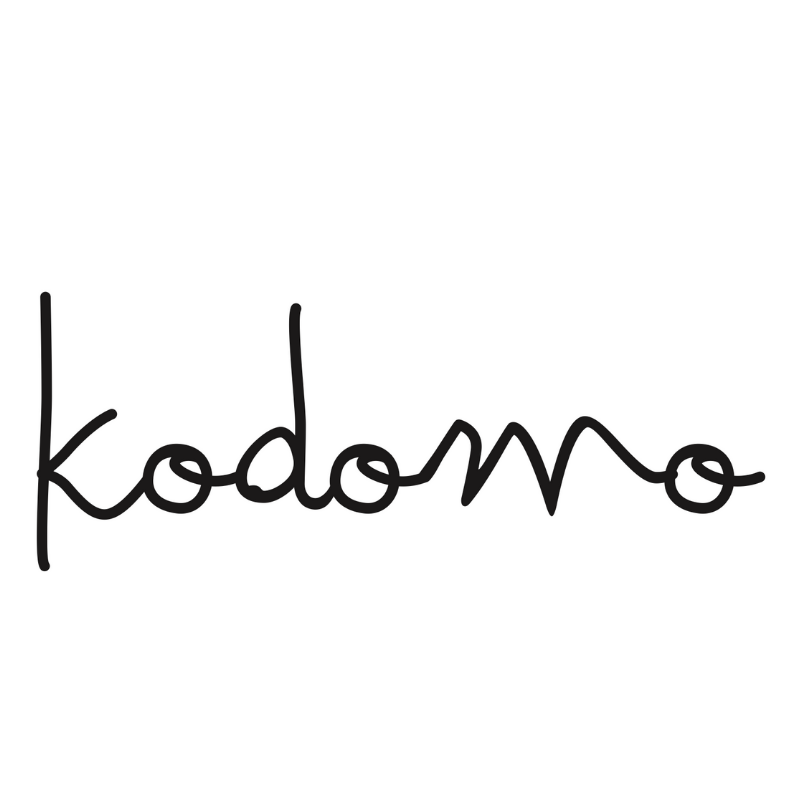faqs
Need to get in touch with us immediately? Email us at info@kodomoboston.com
We get a lot of questions about our shop and its mission to support sustainable children’s fashion. We love questions: they evidence that our customers are thinking about their purchases and working to make good fundamental choices. And it also happens that we’re used to questions, because we have kids. So, ask away!
what is slow fashion?
Slow fashion, also known as ethical fashion, embraces a transparent clothing creation process. It encompasses all steps taken to bring a garment or an accessory from the concept stage through the design phase, to production, and finally to the point of sale. Great consideration is paid to each part of the manufacturing process: Appropriate wages are paid to workers. Factory conditions are maintained. Fabrics are sourced with environmental impact in mind. Sustainability and care are at the heart of each business decision made.
do all of the brands featured at kodomo work under the slow fashion approach?
Yes. We are passionate about supporting sustainable designers. Our brands are global in their presence but local in their operations. We take great care to only partner with clothing and accessory manufacturers who share our commitment to ethics.
Our brands excel at telling their own sustainable stories and we invite you to explore a few of them here:
Molo makes urban, colorful prints by engaging in a proprietary code of conduct with every one of their suppliers, targeted at implementing the 10 Principles of UN Global Compact.
Popelin conducts all of their manufacturing and textile production in the brand’s home country of Spain to ensure a 100% pure supply chain.
Gray Label is proud to produce their organic, minimalist apparel in a Global Organic Textile Standard certified factory.
Mini Rodini is uncompromising in the social and environmental aspects of their production of fun children’s wear. And they express it wonderfully: we alone can’t do everything, but everyone can do something.
We encourage you to embrace that mentality and join us in choosing the right natural resources for our own best natural resource: our kodomo littles.
where did the name kodomo come from?
Jasmine – kodomo’s founder and fearless leader – spent part of her early adulthood in Asia. Her favorite memory of that era was from her time in Japan, where she witnessed the annual “Children’s Day” celebrations each May, or the setting aside of a formal date to respect children’s personalities and to embrace their happiness. Kodomo was founded on the underlying ideas embraced by the Children’s Day holiday, and the organization is run with that premise always in mind: to collect styles that accommodate the incredibly powerful personalities of those smallest shoppers, and that are designed to emulate the happiness they express so physically every day.
does kodomo carry boys clothing?
Our founder has two young boys, so rest assured that yes, kodomo stocks boys’ styles. Jasmine’s sons are like a mini focus group for the tops, bottoms, and layers found for baby, toddler, and school-aged boys in the shop: they make their own opinions known and reinvent the wheel of boy-wear everyday in their own approach to getting dressed. We’re kind of experts in boys over here.
Some of our favorite boy brands (that’s a thing, right? Like boy bands?):
- Scandinavian brand Mini Rodini makes animal print jumpsuits and owns the rights to what may be the best colorway of all time: veggie. Shirts in organic and Fairtrade cotton combine easily with light sweatshorts, fleece caps, and fastidiously fussy five-year olds: the cool quirky styles have saved the morning many a time in Jasmine’s own household.
- MarMar Copenhagen sorts their clothes by the following categories: baby, girl, boy, and leopard. Enough said. Comfort and wearability are defining elements for the Danish brand, and they basically win weekends with their simple and soft long-sleeved, cotton-modal blend tees and leggings.
- Amsterdam-based Gray Label works with only the coziest jersey and fleece organic cotton, endearing the brand’s seamless pants to boys and boy-moms alike. There’s nothing not to love about their insanely soft and loose-fitting minimalistic styles. Bonus points if your guys like grey (note – it hides dirt so we love it).
- Molo actually makes it possible to clothe tween boys. Their funky, urban prints and street style collections are sized up to age 16 – so you can breeze your way through the middle- and high-school years with nary a disagreement around getting dressed. If only your kiddo would get UP.
-Finally: our list would be incomplete without mention of Jasmine’s own favorite, Bobo Choses. The brand’s nostalgic style is like no other: you’ll feel a pull on your own memory of clothes you owned and wore decades ago when browsing their sustainable selections. Bobo Choses has a capsule non-profit collection called W.I.M.A.M.P. – or Worldwide Inventive Minds Against Monsters of Pollution. What kid doesn’t want to fight the monsters every day, just by grabbing a patterned shirt and printed Bermuda shorts?
what sizes do you have in your shops and online?
We carry clothing for newborns up to age 16. Some of our designers also create styles for adults and so you’ll see a curated women’s collection featured on our site. Smaller grown-ups have been known to fit nicely in the larger sizes of our outerwear. You can visit our instagram feed and these particular shots for the evidence.
where are the clothes from?
Kodomo style is culled from around the globe. Our shop showcases soft fabrics from Spain, fair-trade alpaca knits from Peru, colorful prints illustrated in Denmark, light layers made in LA.
A full list of countries represented at kodomo is below. We have also included the brands we feature from each country. Many are in stock now and some will be launching at kodomo across the next season.




